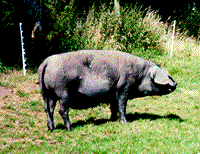 A while back my CPs and I realized we were all tapping into elements of popular fairy tales: Beauty and the Beast, Sleeping Beauty and (mine) Cinderella. We didn’t see it as a Bad Thing. These stories have something called “enduring appeal”. Nothing wrong with that!
A while back my CPs and I realized we were all tapping into elements of popular fairy tales: Beauty and the Beast, Sleeping Beauty and (mine) Cinderella. We didn’t see it as a Bad Thing. These stories have something called “enduring appeal”. Nothing wrong with that!
I’ve been thinking about Cinderella again (must be one of my favorites) and here are some of the reasons for her popularity:
- The idea of a magical night where one meets (and instantly recognizes) one’s soul-mate. Glass slipper optional.
- The whole rags-to-riches, ugliness-to-beauty transformation.
- The desire to be rescued from one’s humdrum existence, the whole “Calgon, take me away!” fantasy.
But the rescue fantasy can also be the downside of a Cinderella story. I enjoyed the classic Disney animated version, but have to admit the mice carried the story. As a child, I wondered if you got a Prince just for putting up with annoying relatives. Knowing I couldn’t have put up with that evil stepmother and mean stepsisters made me feel a bit . . . guilty.
That was before we writers were told it was Bad to have a Passive Heroine who puts up with a toxic situation rather than leave or change it.
 More recent retellings make an effort to reverse this. One of my favorite is the movie “Ever After” with Drew Barrymore. A plucky Cinderella, who has good reasons for staying with her family and does NOT meekly accept her fate (she punches out one evil stepsister, and rescues the hero from a band of brigands.)
More recent retellings make an effort to reverse this. One of my favorite is the movie “Ever After” with Drew Barrymore. A plucky Cinderella, who has good reasons for staying with her family and does NOT meekly accept her fate (she punches out one evil stepsister, and rescues the hero from a band of brigands.)
 A more self-conscious effort came in Disney’s remake of Rodgers & Hammerstein’s Cinderella (the version with Brandy and Whitney Houston). Some people dissed this movie for its interracial cast (but it’s a fairy tale, right, folks?) I enjoyed it for the most part, and thought Pablo Montalban was particularly charming as the prince though Jason Alexander was equally annoying as the palace gofer. Back to the subject, though, in this remake they have Cinderella run away from her toxic family near the end. Of course, on the way out she meets up with the Prince.
A more self-conscious effort came in Disney’s remake of Rodgers & Hammerstein’s Cinderella (the version with Brandy and Whitney Houston). Some people dissed this movie for its interracial cast (but it’s a fairy tale, right, folks?) I enjoyed it for the most part, and thought Pablo Montalban was particularly charming as the prince though Jason Alexander was equally annoying as the palace gofer. Back to the subject, though, in this remake they have Cinderella run away from her toxic family near the end. Of course, on the way out she meets up with the Prince.
 One Cinderella retelling I thoroughly enjoyed was Gail Carson Levine’s ELLA ENCHANTED. The movie version was cute, but totally deviated from the book except for the main premise, that Ella struggled against an enchantment that forced her to obey any command from anyone. The book is a fun read, with an important message.
One Cinderella retelling I thoroughly enjoyed was Gail Carson Levine’s ELLA ENCHANTED. The movie version was cute, but totally deviated from the book except for the main premise, that Ella struggled against an enchantment that forced her to obey any command from anyone. The book is a fun read, with an important message.
On to some Regency-set romances with Cinderella elements.
 ARABELLA, by Georgette Heyer, is perhaps the classic, quintessential London Season story, where a heroine from a modest country family becomes the most sought-after belle in society. It’s great fun, but I have to say too that it’s been imitated far too many times. The other Cinderella element that’s become rather tired is the poor, unappreciated heroine whose mother (or stepmother) unfairly favors her supposedly more beautiful sister.
ARABELLA, by Georgette Heyer, is perhaps the classic, quintessential London Season story, where a heroine from a modest country family becomes the most sought-after belle in society. It’s great fun, but I have to say too that it’s been imitated far too many times. The other Cinderella element that’s become rather tired is the poor, unappreciated heroine whose mother (or stepmother) unfairly favors her supposedly more beautiful sister.
 One story that flipped over the Cinderella concept is AN UNLIKELY HERO, by Gail Eastwood. The hero, Gilbey, is a soft-spoken, scholarly NICE guy who comes into his strength while aiding the heroine and her sister. Loved this one!
One story that flipped over the Cinderella concept is AN UNLIKELY HERO, by Gail Eastwood. The hero, Gilbey, is a soft-spoken, scholarly NICE guy who comes into his strength while aiding the heroine and her sister. Loved this one!
 A more obviously Cinderella-inspired story is ONE NIGHT OF PASSION, by Elizabeth Boyle. The story starts with the heroine seducing the hero at a Cyprian’s Ball. Though it doesn’t tap much deeper into the fairy tale, it’s a fun, quick read.
A more obviously Cinderella-inspired story is ONE NIGHT OF PASSION, by Elizabeth Boyle. The story starts with the heroine seducing the hero at a Cyprian’s Ball. Though it doesn’t tap much deeper into the fairy tale, it’s a fun, quick read.
So what do you like best/worst about the Cinderella fantasy? When does a Cinderella cross the line from being worthy to being a doormat? Is it going too far to have a kickbutt Cinderella instead?
What are your best/least favorite interpretations of Cinderella?
Elena
LADY DEARING’S MASQUERADE, RT Reviewers’ Choice Award nominee
www.elenagreene.com


















